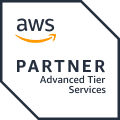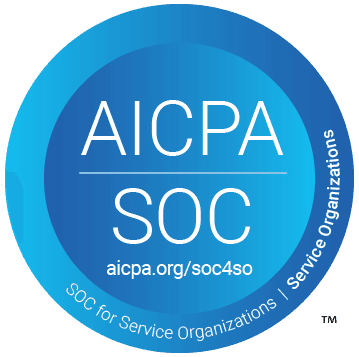When it comes to ease of management of containerized applications, Azure Kubernetes Service seems to capture the attention of many. Not only does it enable simple deployment, scaling, sustaining, and maintaining workloads, it remains relatively popular compared to other methods of management. When looking to adopt AKS it is pertinent to first understand the core pricing structures so as to make strategic decisions with regard to savings on cloud expenditure.
In this blog, we focus on the anticipated pricing in 2025 and also explore the various features, tiers, and strategies on cost maximization that can be employed to ensure proper cloud spending.
What is Microsoft Azure Kubernetes Service?

Azure Kubernetes Service is a container orchestration service offered by Microsoft Azure to facilitate the hosting, management, and scaling of application containers. It is considered one of the most vital solutions in Microsoft’s technological portfolio. This is mainly due to the fact that businesses seeking to utilize cloud services have a hard time effectively managing applications. AKS plays a critical role in improving performance levels of such firms.
Key Features
Scalability: Automatically scale applications based on demand for optimal performance.
Seamless Azure Integration: Works effortlessly with Azure services like Azure Monitor, Security Center, and Active Directory.
Cost-Effective: Pay-as-you-go pricing ensures flexibility to match your business needs.
Enhanced Security: Features role-based access control, network policies, and Azure Defender integration for comprehensive protection.
Open-Source Flexibility: Fully supports Kubernetes-native tools, enabling developer freedom and compatibility.
How Does Azure Kubernetes Service Work?
AKS simplifies Kubernetes configuration, scaling, and upkeep processes, centralizing system administration and saving management overhead. Understanding its architecture enables better cost and value estimations.
Key Components
Control Plane - Managed free of cost, ensures seamless Kubernetes operations.
Node Pools - Sets of VMs executing your workloads are adjustable based on specific workload requirements.
Cost Influencers
Compute Resources: Costs are established by the type and size of the virtual machines in use. Premium VMs that tend to be more expensive may be necessary for sensitive workloads.
Storage: Offered in several tiers by Azure, with higher performance SSDs costing more, to lower cost archival SSDs.
Networking: Includes charges for incoming and outgoing data transfer. Costs are dependent on location and usage.
Benefits
Rapid scalability for businesses of any size.
Seamless integrations with Azure services like Azure CLI, PowerShell, and Active Directory to simplify management.
High flexibility for workloads with dynamic resource demands.
Deep Dive into Azure Kubernetes Service Pricing Structure
To understand the AKS pricing model, it is necessary to consider the primary factors such as resource utilization, SLA level, and location. Below is a more detailed list of pertinent pricing tiers and their associated costs as well as other pricing influencing factors.

Free Tier
Cost: $0 per cluster/hour for control plane management. Compute, storage, and networking incur charges.
Best for: Testing, learning Kubernetes, or running development clusters under 10 nodes.
Limitations: Workloads in production are not ideal as no SLA is guaranteed.
Standard Tier
Cost: $0.10 per cluster/hour. Compute instances and storage are pay-as-you-go.
Best for: Production-grade applications needing high reliability and uptime.
Advantages: Includes a 99.95% financially backed SLA for clusters in Availability Zones, long-term support availability, and a scalable Kubernetes control plane.
Cluster Limits: Supports up to 5,000 nodes per cluster.
Premium Tier
Cost: $0.60 per cluster/hour for clusters running on long-term support (LTS).
Best for: Workloads with critical missions requiring support for a more sustained Kubernetes version.
Advantages: Microsoft adds maintenance on certain modules under community support.
Cost Factors
Location-Based Pricing: Some Azure regions like US Central and Europe are more economical.
Resource Usage: Virtual machines, storage, and data transfer contribute significantly to your costs.
Payment Plans:
Pay-As-You-Go: Offers great flexibility for dynamic workloads where payment is based on use, but can be costly in the long-term.
Reserved Instances: Commit to 1-3 years to save up to 72%, perfect for stable Kubernetes nodes and predictable workloads.
Spot VMs: Flexibility for non-sensitive tasks that can withstand interruptions, though resources may be reclaimed at any time. Offers unused Azure capacity at 90% savings.
Additional Pricing Benefits
Azure Hybrid Benefit: Existing Windows Server/SQL licenses can be used to lower the costs of virtual machines by up to 85%.
Savings Plans: Lock in discounts by committing to a specific hourly spend for 1 or 3 years. Plans can be applied across multiple services, enhancing flexibility.
Free Managed Control Plane: Unlike some competitors, AKS offers a free control plane by default, lowering the total cost of ownership.
Comparison with Other Kubernetes Services
When comparing other Providers, Amazon EKS and Google GKE stand out for having multiple additional costs for control-plane functionalities or advanced management capabilities. AKS, with its no additional cost-managed control-plane, stands out. This is why most startups and growing corporate scale operations prefer using Azure.
Amazon EKS and GKE already have imposed additional management costs for production environments, such as control-plane costs and costs related to advanced management capabilities.
Tools and Tips for Cutting Azure Kubernetes Service Costs
To avoid incurring unnecessary costs, companies should leverage cost-management tools as well as follow best practices.
Tools to Optimize AKS Spending
Azure Cost Management + Billing: Monitor and manage resource usage.
AKS Pricing Calculator Tool: Estimate monthly costs with granularity.
Azure Monitor: Helps to improve cluster performance and optimize node usage.
Best Practices
Right-Size VMs: Helps eliminate over-provisioning by selecting VM types according to the application's requirements.
Leverage Auto-Scaling: Use Kubernetes Cluster Autoscaler and Horizontal Pod Autoscaler to meet workload demands dynamically.
Tagging Resources: Use tags to organize resources by team, initiative, or environment, ensuring better budgeting and accountability.
Utilize Spot VMs for Fault-Tolerant Workloads: Save up to 90% for non-critical applications by leveraging unused capacity.
Case Study: How Blip Enhanced Customer Interactions
Using Azure OpenAI Service, Blip personalizes brand-customer relations by processing over 1 billion messages monthly. The result?
80% Suggestion Acceptance Rate (Up from 30%)
32+ Countries Reached
By migrating to .NET 8 and Azure Kubernetes Service, Blip guarantees security, scalability, and high performance. Through AI and Microsoft technologies, they are now changing customer care and brand loyalty.
Conclusion
Understanding AKS pricing is essential for balancing your business needs with cost efficiency. Whether you’re testing workloads on the Free Tier or scaling enterprise-level applications on Premium, a clear grasp of the pricing structure can significantly optimize your cloud spending.
Start by analyzing your workloads with Azure Pricing Calculator or take the Free Tier for a risk-free trial. This way, you can make informed decisions and maximize the value of your AKS investment.
Join Pump for Free
If you are an early-stage startup that wants to save on cloud costs, use this opportunity. If you are a start-up business owner who wants to cut down the cost of using the cloud, then this is your chance. Pump helps you save up to 60% in cloud costs, and the best thing about it is that it is absolutely free!
Pump provides personalized solutions that allow you to effectively manage and optimize your Azure, GCP and AWS spending. Take complete control over your cloud expenses and ensure that you get the most from what you have invested. Who would pay more when we can save better?
Are you ready to take control of your cloud expenses?



